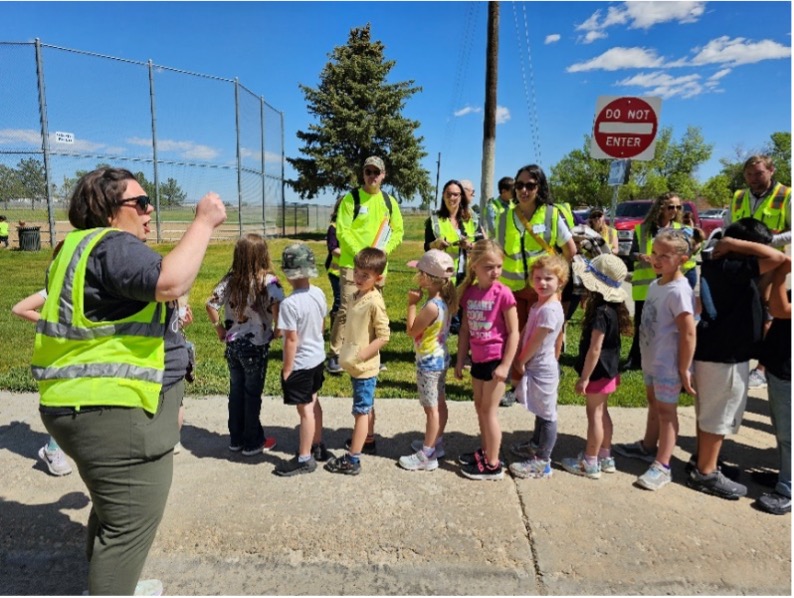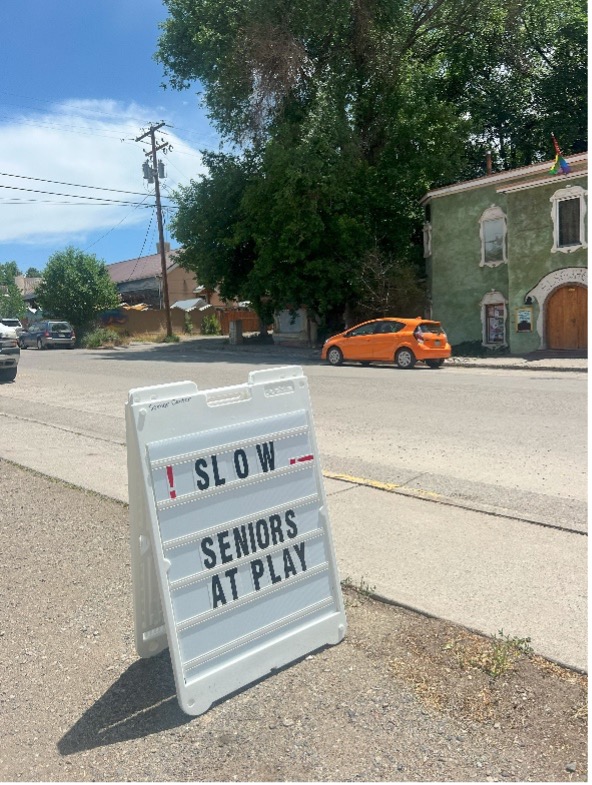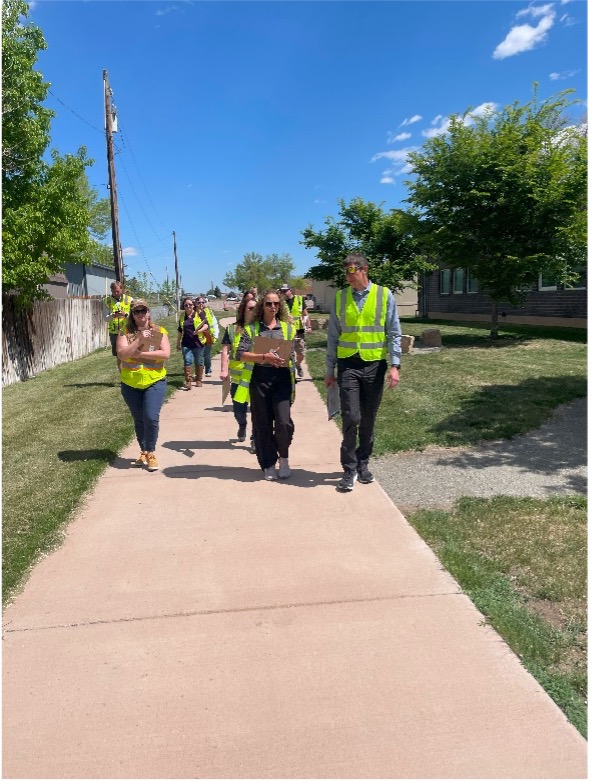We celebrate July as National Recreation and Parks Month by elevating the importance of walkable access to parks for people in communities of all sizes!
In June, we wrapped up two more site visits to Colorado as part of our Safe Routes to Parks Activating Communities Program. Our workshops in Wellington and Paonia, two small Colorado towns underscored why Safe Routes to Parks resonates across communities of all sizes, even in low-population and rural communities. Here are a few reasons why.
Safe Routes to Parks enhances biking and walking connectivity throughout a small community
While small towns may require driving long distances between locations, often there are clusters of places people need and want to go along centralized corridors and Main Streets making these areas within small towns great places to walk or bike. In Wellington (population 11, 978), a small town north of Fort Collins, as we walked the streets with town staff and community partners, it became clear that the same routes used to get to their parks also connected to schools, the library, and local businesses along their Main Street. While Safe Routes to Parks brought the group together, improvements to walking and biking routes would actually enhance access to multiple community resources. The school district, the local Boys and Girls Club, the Kiwanis Club, the town library, and the Main Street District were among the partners keen to support Safe Routes to Parks recognizing its broad benefits to improve safety and mobility for youth and residents. This was highlighted during the Safe Routes to Parks workshop as partners happened upon several classes of elementary school students walking to their local park together.

Students from Eyestone Elementary School in Wellington walk with their teachers to a nearby town park for outdoor learning.
Safe Routes to Parks builds on community enthusiasm for parks, trails, and open space
Outdoor recreation, connection to nature, social connection, and physical activity are just a few reasons people visit parks. For community members in small towns, these values resonate too. From playing pickleball to fishing, hiking to nighttime stargazing, parks, trails, and greenspaces are gathering spaces for small towns where community members tend to know each other well. Safe Routes to Parks can be an opportunity to bring together these diverse users, united in their shared values for these spaces. In a place like Paonia (population 1, 462), a rural community on Colorado’s Western Slope, the importance of parks and public lands was underscored in their recent parks master plan, Paonia in Motion. Safely biking and walking to their parks was a natural extension of their efforts to improve their parks. Their Safe Routes to Parks workshop became the next step in advancing those access goals as part of their park planning process.

A Paonia community member notes observations from their community walk audit to their park.
Photo credit: Tammie Meck
Safe Routes to Parks engages multi-generational community members with unique mobility needs
Community engagement is at the core of the Safe Routes to Parks planning process, and in small towns, intergenerational opportunities for engagement are particularly pronounced. In Paonia, we saw this to be true. As part of our site visit, we attended a potluck at their local Senior Center to connect with community members and chat about how they use their parks and how they get to them. We were delighted to talk with residents including, Lynn, a lifelong resident celebrating their 97th birthday who used her scooter to get to the park. She and her peers highlighted the need for ADA access and connected routes with curb ramps. We also met preschool teachers who use the local parks as outdoor classrooms. They emphasized the desire for safe routes and slow car speeds to shepherd their tiniest learners to participate in learning activities like “Forest Fridays” and other nature education.

Paonia residents, including seniors and kids, participate in their community walk audit
Photo credit: Tammie Meck

This sign in front of Paonia's Senior Center alerts drivers to slow down
Safe Routes to Parks helps steward resources to implement projects even in small communities
Safe Routes to Parks can be a way to maximize planning efforts and open up opportunities by bridging together multiple sectors– transportation, community development and planning, public works, public health, parks and natural resources – to name a few. These Colorado towns were eager to plot out how they might advance on-the-ground improvements, and the Safe Routes to Parks workshops were a great way to connect with agency partners to learn more about state and federal funding opportunities and consider new ways to utilize grant funds. For instance, community partners and town staff in Wellington commented on how helpful it was to do a walk audit to observe together specific route challenges. They were eager to use this tool and its findings inform improvements that could be funded by a Highway Safety Improvement Program (HSIP) grant they were recently awarded. In Paonia, outdoor and nature enthusiasts and school partners were eager to learn more about transportation funding to support park access. They are looking forward to reconvening and planning for Colorado’s Safe Routes to School grant available in Fall 2024 to sustain their Safe Routes to Parks initiative.

This ample walking path is a low-stress, pleasant route that was built by the local school district but also is used to connect to Library Park in Wellington.
We are so grateful to our community partners in Wellington and Paonia. They are doing incredible work to bring together partners and engage community members to advance safe routes, showing that size doesn’t matter when it comes to Safe Routes to Parks!
Relevant Resources:

